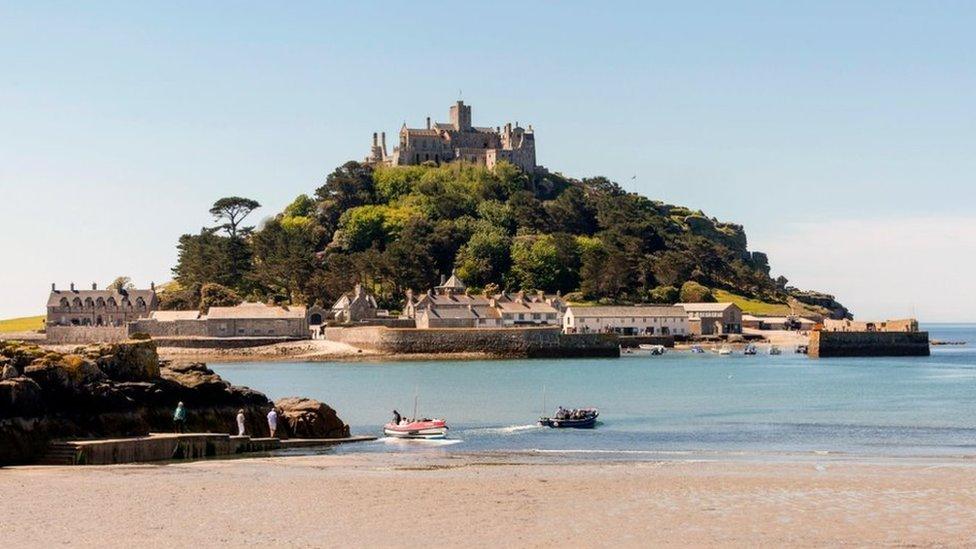Bamburgh Castle excavation unearths Romano-British roundhouse
- Published
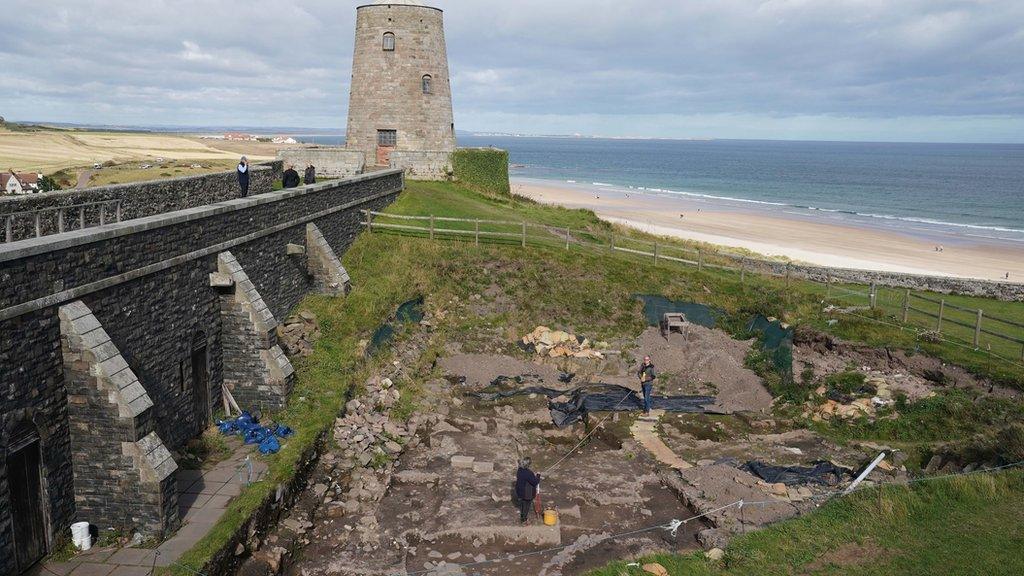
Excavations began at the castle in the 1960s
A roundhouse thought to date back to the Romano-British period has been unearthed at Bamburgh Castle in Northumberland.
Foundations of the 40ft (12m) structure were discovered by volunteers from the Bamburgh Research Project.
Believed to be more than 2,000 years old, excavators hope it will help reveal gaps in the castle's history.
Project director Graeme Young said the "remarkable find" was one of the "most important" to be made at the site.
"It was sheer chance that we decided to dig that little bit further in the final days of digging here at the castle, otherwise we would have missed it.
"To find a roundhouse in the north with such a well-preserved sequence of floor surfaces is very rare, but what is exciting is that it may help us fill the missing jigsaw pieces of continuity in Bamburgh's history."
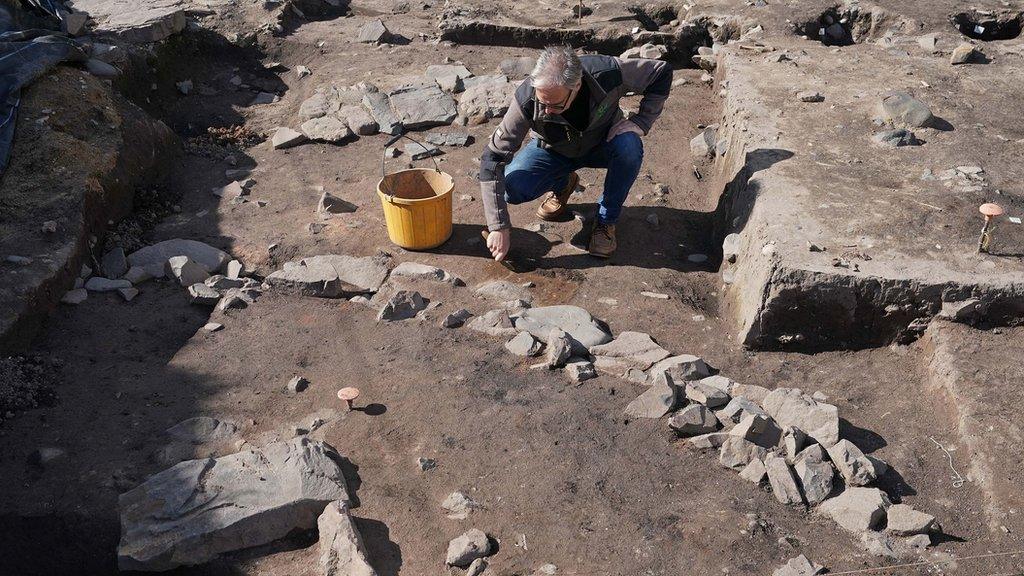
Volunteers were finishing their annual field project when a last-minute decision was made to excavate a further few inches of soil - unearthing the foundations
The position of the rubble foundations in the archaeological layers has led excavators to believe the original structure could date back to the Roman occupation of Britain.
Who lived at the coastal site before the Anglo-Saxon kings is unknown and it is hoped the find could hold "vital clues" about the transition from the Roman period to Anglo-Saxon England, Mr Young said.
"While we have a good understanding about Anglo-Saxon life at the ruling capital of Bamburgh, there are many theories surrounding the Roman period up to the life of the early medieval kings.
"Everyone expects continuity, and this discovery has the potential to give us fascinating evidence and flesh on the very bare skeleton about the continual occupation of Bamburgh."
The Armstrong family, who privately own the castle, are funding further archaeological investigations at the roundhouse site in the coming weeks.

Follow BBC North East & Cumbria on Twitter, external, Facebook, external and Instagram, external. Send your story ideas to northeastandcumbria@bbc.co.uk, external.
- Published9 August 2020
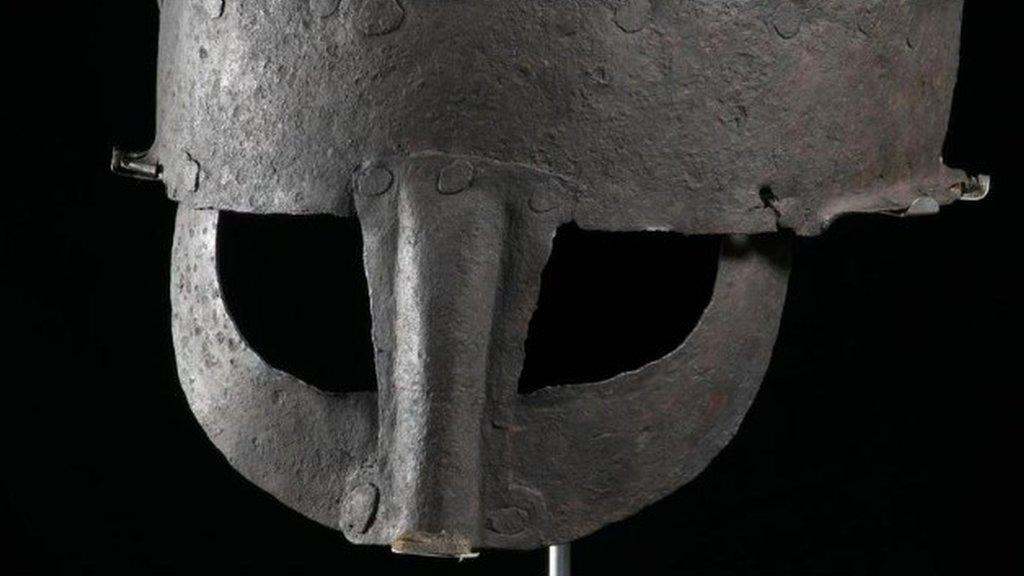
- Published6 May 2020

- Published11 February 2020
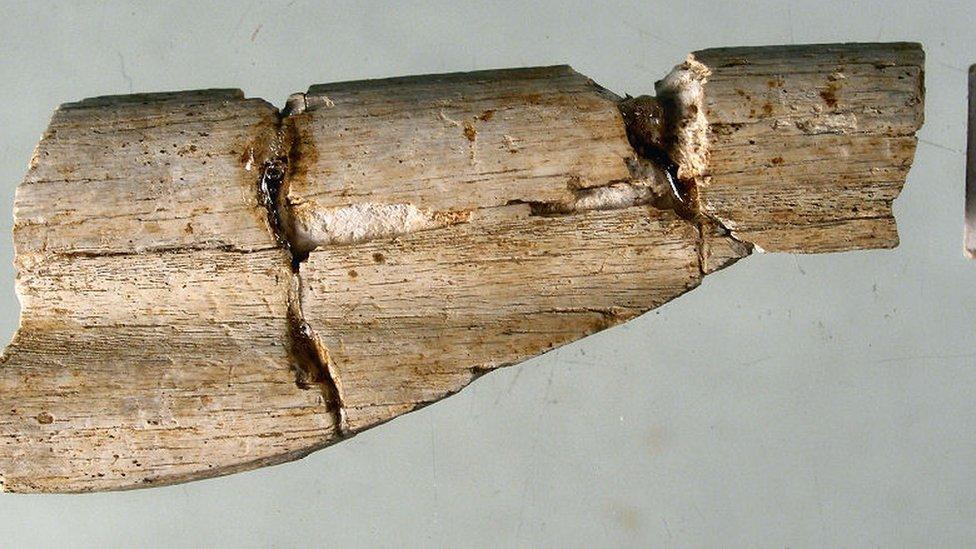
- Published8 September 2019
